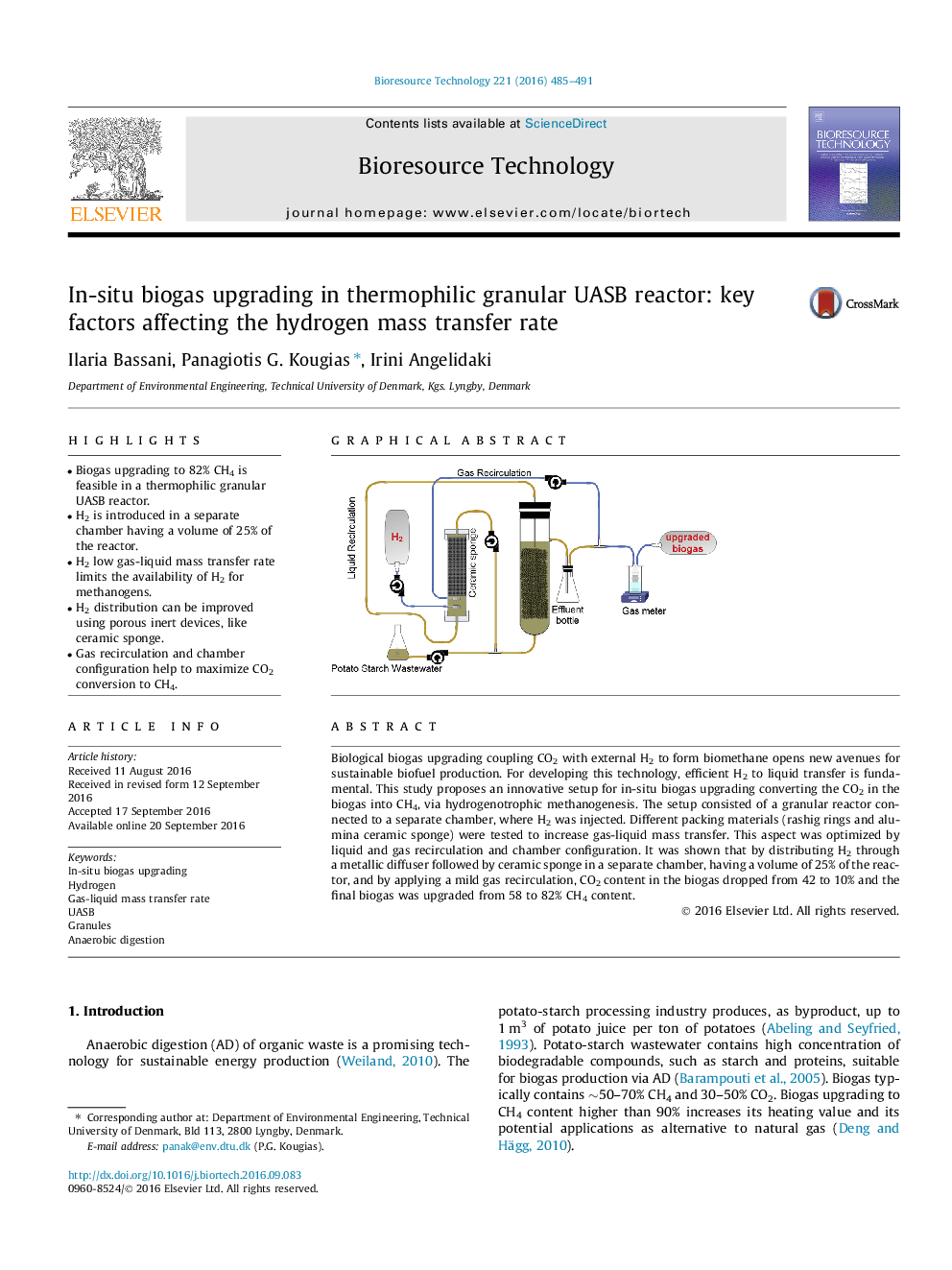| Article ID | Journal | Published Year | Pages | File Type |
|---|---|---|---|---|
| 4998066 | Bioresource Technology | 2016 | 7 Pages |
â¢Biogas upgrading to 82% CH4 is feasible in a thermophilic granular UASB reactor.â¢H2 is introduced in a separate chamber having a volume of 25% of the reactor.â¢H2 low gas-liquid mass transfer rate limits the availability of H2 for methanogens.â¢H2 distribution can be improved using porous inert devices, like ceramic sponge.â¢Gas recirculation and chamber configuration help to maximize CO2 conversion to CH4.
Biological biogas upgrading coupling CO2 with external H2 to form biomethane opens new avenues for sustainable biofuel production. For developing this technology, efficient H2 to liquid transfer is fundamental. This study proposes an innovative setup for in-situ biogas upgrading converting the CO2 in the biogas into CH4, via hydrogenotrophic methanogenesis. The setup consisted of a granular reactor connected to a separate chamber, where H2 was injected. Different packing materials (rashig rings and alumina ceramic sponge) were tested to increase gas-liquid mass transfer. This aspect was optimized by liquid and gas recirculation and chamber configuration. It was shown that by distributing H2 through a metallic diffuser followed by ceramic sponge in a separate chamber, having a volume of 25% of the reactor, and by applying a mild gas recirculation, CO2 content in the biogas dropped from 42 to 10% and the final biogas was upgraded from 58 to 82% CH4 content.
Graphical abstractDownload high-res image (131KB)Download full-size image
